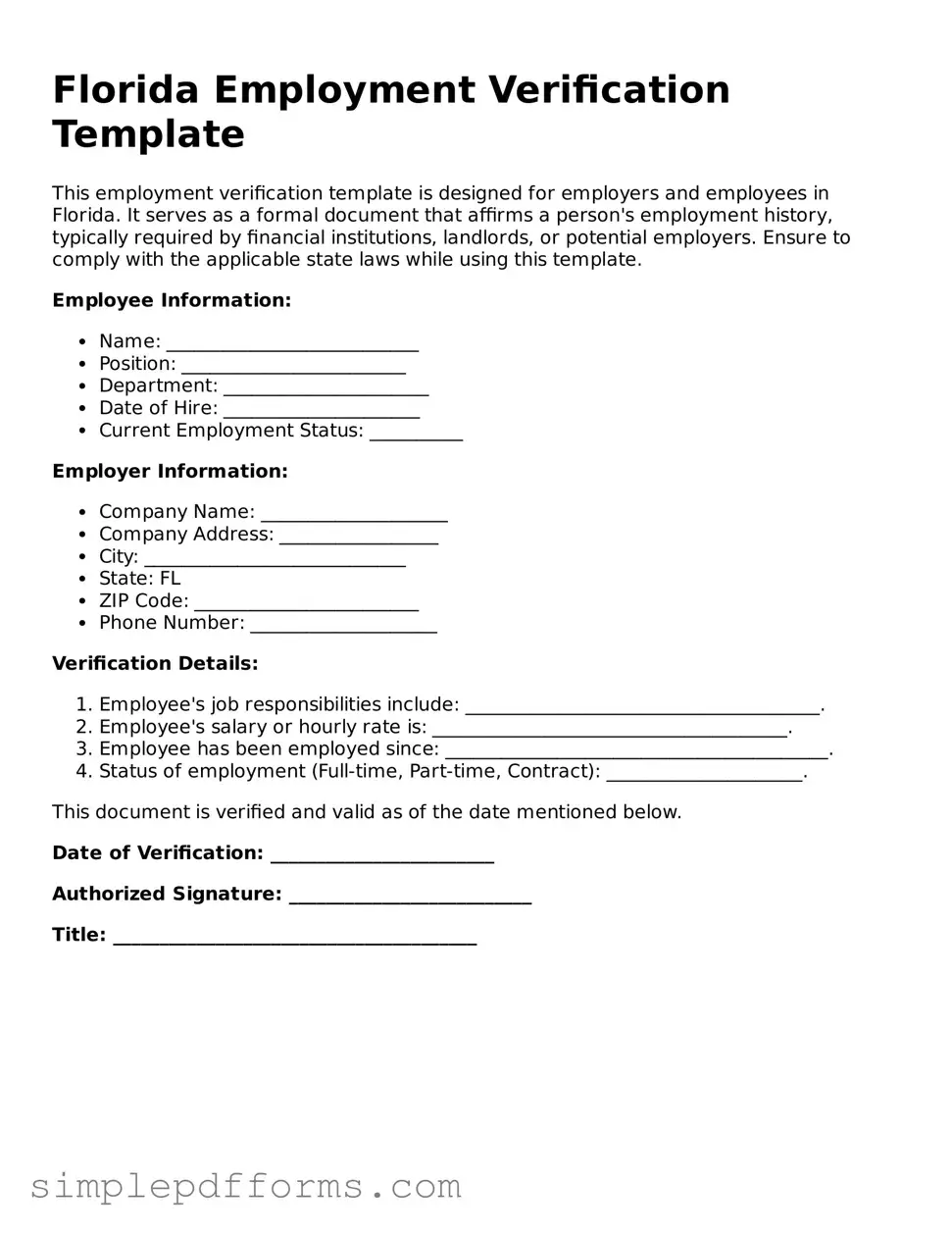Florida Employment Verification Template
This employment verification template is designed for employers and employees in Florida. It serves as a formal document that affirms a person's employment history, typically required by financial institutions, landlords, or potential employers. Ensure to comply with the applicable state laws while using this template.
Employee Information:
- Name: ___________________________
- Position: ________________________
- Department: ______________________
- Date of Hire: _____________________
- Current Employment Status: __________
Employer Information:
- Company Name: ____________________
- Company Address: _________________
- City: ____________________________
- State: FL
- ZIP Code: ________________________
- Phone Number: ____________________
Verification Details:
- Employee's job responsibilities include: ______________________________________.
- Employee's salary or hourly rate is: ______________________________________.
- Employee has been employed since: _________________________________________.
- Status of employment (Full-time, Part-time, Contract): _____________________.
This document is verified and valid as of the date mentioned below.
Date of Verification: ________________________
Authorized Signature: __________________________
Title: _______________________________________
